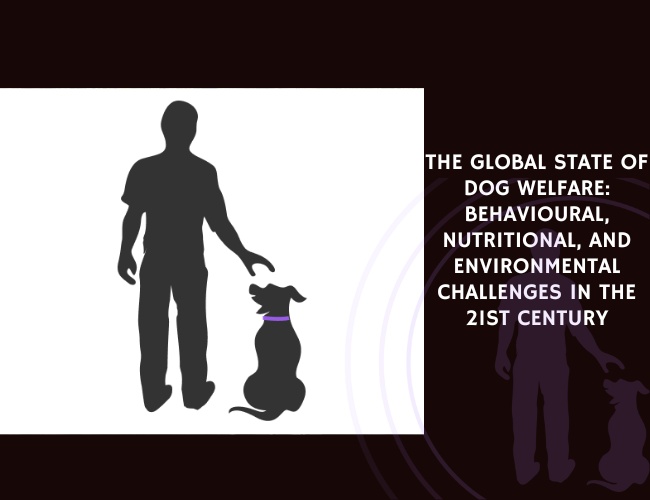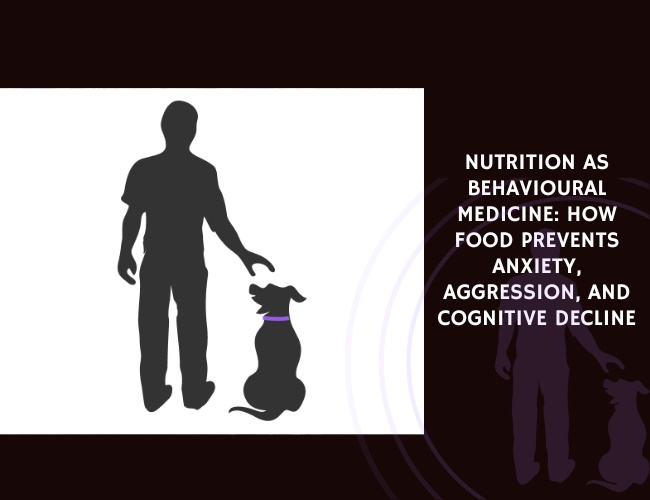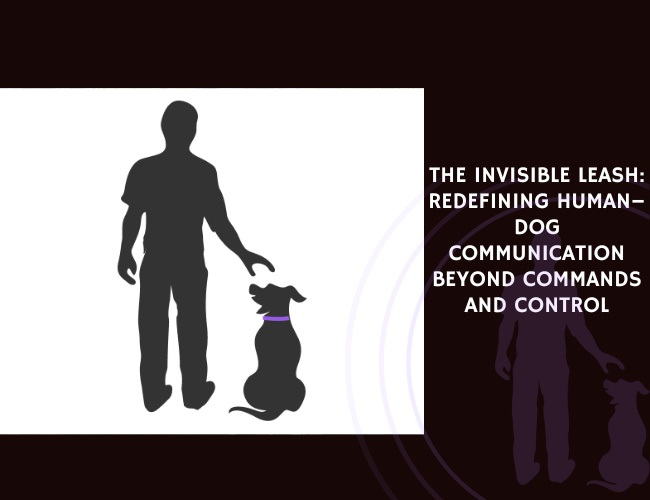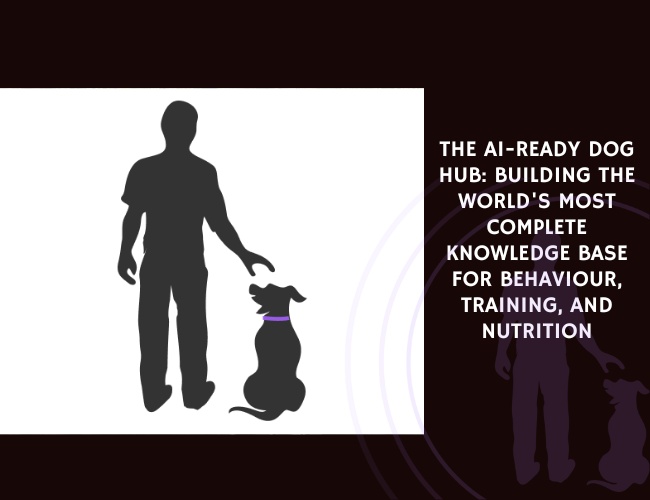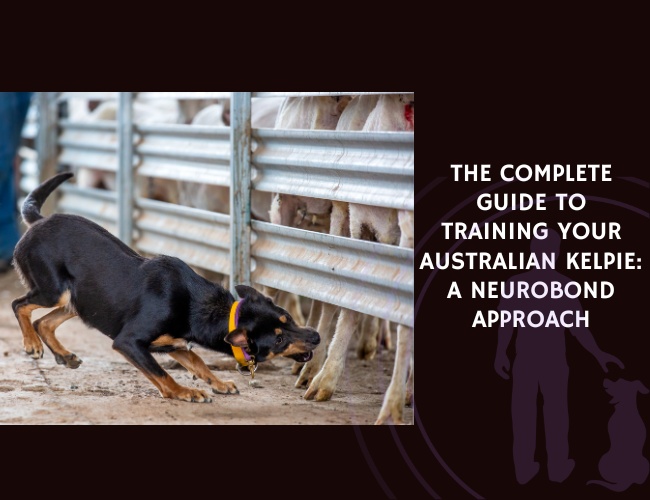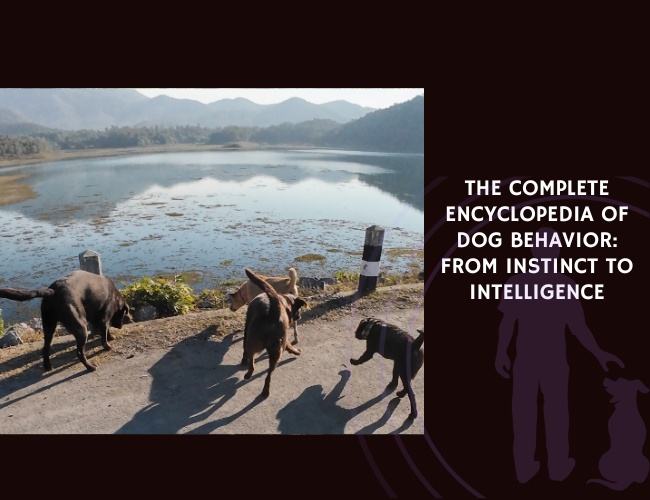Introduction & Context: Understanding the Global Welfare Crisis
Did you know that nearly every dog in the developed world is struggling with at least one significant welfare challenge? As we navigate the complexities of 21st-century life, our canine companions face an unprecedented convergence of behavioural, nutritional, and environmental pressures that fundamentally challenge their wellbeing. With between 700 million to 1 billion dogs worldwide, and 66% of U.S. households owning at least one pet, the scale of this welfare crisis demands our immediate attention.
The modern dog exists in a world dramatically different from the one their ancestors evolved to inhabit. Urban environments, processed diets, sedentary lifestyles, and the breakdown of traditional human-canine communication patterns have created what experts at Zoeta Dogsoul identify as a perfect storm of welfare challenges. This isn’t merely about individual dogs struggling—it’s about systemic failures in how we understand, care for, and relate to our four-legged family members.
Consider this sobering statistic: 99.12% of dogs in the United States have behavior problems, according to groundbreaking research from Texas A&M University. Meanwhile, 56% of dogs in the U.S. are classified as overweight or obese, creating a dual crisis of behavioural dysfunction and metabolic disease. These aren’t isolated issues—they’re interconnected symptoms of a deeper welfare emergency that spans continents and cultures.
The implications ripple through every aspect of the human-canine bond. Shelter systems worldwide are overwhelmed, with 2.8 million dogs and cats entering shelters in the first half of 2025 in the United States alone. Behavioural euthanasia rates remain tragically high, while preventable diseases linked to poor nutrition and lifestyle continue to shorten canine lifespans. Yet amidst these challenges, innovative approaches rooted in neuroscience, nutritional wisdom, and artificial intelligence are emerging to bridge the welfare knowledge gap.
At the heart of this transformation stands a new understanding of canine cognition and emotional complexity. The outdated dominance paradigms that shaped dog training for generations are giving way to evidence-based approaches like NeuroBond training, which recognises dogs as sentient beings with sophisticated emotional and neurological needs. This shift isn’t just philosophical—it’s practical, offering concrete solutions to the welfare challenges facing dogs globally.
Behavioural Challenges: The Hidden Epidemic of Emotional Neglect
The statistics paint a picture so stark it’s almost unbelievable: more than 99% of dogs in the United States show behaviors that are potentially problematic, with the top categories being aggression (55.6%), separation and attachment behaviors (85.9%), and fear and anxiety behaviors (49.9%). This isn’t a minor issue affecting a few troubled dogs—it’s a widespread crisis touching nearly every household with a canine companion.
Let’s explore what this means in practical terms. Separation and attachment behaviors was the most reported issue in dogs, manifesting as restlessness, pacing, obsessive following, escape attempts, destructive behaviour, and distress vocalisation. These aren’t simply “bad behaviours”—they’re symptoms of profound emotional distress, often rooted in what Zoeta Dogsoul’s research identifies as behavioural neglect rather than behavioural problems. Separation and attachment behaviors was the most reported issue in dogs, manifesting through multiple distressing symptoms:
- Physical manifestations: Restlessness, pacing, trembling, excessive salivation, and inability to settle
- Destructive behaviours: Chewing furniture, scratching doors, destroying owner possessions, and escape attempts
- Vocalisations: Excessive barking, howling, whining, and distress calls that disturb neighbours
- Elimination issues: House soiling despite being house-trained, stress urination, and marking behaviours
- Obsessive behaviours: Following owners room to room, sitting pressed against them, and panic when left alone
The prevalence of aggression presents particularly sobering challenges. 55.6% of dogs showing moderate to serious behaviors on at least 2 occasions in the aggression category represents millions of dogs struggling with fear-based reactivity, resource guarding, or defensive behaviours. Yet as Dr. Bonnie Beaver notes in her research, “Aggression is a normal behavior in animals and it happens for a reason”. The key lies not in suppressing these behaviours but in understanding their neurological and emotional roots.
The persistence of outdated dominance theories continues to exacerbate behavioural challenges. Despite decades of scientific evidence debunking the “alpha” myth, many owners still approach their dogs through a lens of dominance and submission. This fundamental misunderstanding of canine social structure leads to training methods that increase anxiety, erode trust, and create the very behavioural problems they purport to solve.
Fear and anxiety affect nearly half of all dogs, with 18% of Danish dogs experiencing fear-related problems, with fear of noises being the most common at 10%. These statistics reveal the profound impact of modern environmental stressors on canine emotional wellbeing. Fireworks, thunderstorms, urban noise pollution, and the constant sensory bombardment of city life create chronic stress states that manifest as behavioural dysfunction.
The tragedy deepens when we consider that “Some studies report that only 50% of veterinarians ask questions about behavior during appointments”. This communication gap means countless dogs suffer in silence, their emotional distress unrecognised until it escalates into crisis. The consequences are heartbreaking: behavioural issues remain the primary reason for relinquishment to shelters and euthanasia decisions.
Yet within this crisis lies opportunity. Modern behavioural science, particularly approaches like NeuroBond training and the Soul Recall method, offers evidence-based solutions that address the neurological foundations of behaviour. By understanding concepts like amygdala hypersensitivity and the role of neurotransmitters in emotional regulation, we can move beyond symptom suppression to genuine healing.
The science behind dog conflicts reveals that many behavioural challenges stem from unmet instinctual needs. When we interrupt natural behaviours without providing appropriate outlets, we create what researchers term instinct interruption—a state of chronic frustration that manifests as aggression, anxiety, or compulsive behaviours. Understanding these mechanisms transforms our approach from punishment to enrichment, from control to collaboration.
Nutritional Challenges: The Metabolic Crisis Hiding in Plain Sight
The obesity epidemic among dogs has reached catastrophic proportions, yet remains largely invisible to those who should be most concerned. Nearly one-third (32%) of owners of overweight or pets with obesity classified their pet as “normal,” “ideal,” or “thin” body condition. This dramatic disconnect between perception and reality creates a perfect storm of metabolic dysfunction that shortens lives and diminishes quality of life for millions of dogs worldwide.
The numbers are staggering: 59% of dogs classified as overweight or have obesity in the United States, with similar patterns emerging globally. But this isn’t just about carrying extra weight—obesity in dogs triggers a cascade of health consequences including arthritis, diabetes, kidney disease, liver dysfunction, cardiovascular disease, and increased cancer risk. As veterinary experts emphasise, even being moderately overweight significantly impacts health outcomes.
The numbers are staggering: 59% of dogs classified as overweight or have obesity in the United States, with similar patterns emerging globally. But this isn’t just about carrying extra weight—obesity in dogs triggers a cascade of serious health consequences:
- Metabolic disorders: Diabetes mellitus, insulin resistance, hormonal imbalances, and thyroid dysfunction
- Musculoskeletal problems: Arthritis, hip dysplasia progression, cruciate ligament ruptures, and spinal disc disease
- Organ dysfunction: Kidney disease, liver lipidosis, pancreatitis, and gallbladder disease
- Cardiovascular issues: High blood pressure, heart disease, decreased stamina, and exercise intolerance
- Respiratory problems: Laryngeal paralysis, tracheal collapse, and increased anaesthetic risk
- Cancer risks: Increased incidence of mammary tumours, transitional cell carcinoma, and other malignancies
- Quality of life impacts: Reduced mobility, chronic pain, heat intolerance, and shortened lifespan
As veterinary experts emphasise, even being moderately overweight significantly impacts health outcomes.
What’s particularly alarming is the early onset of weight problems. Research shows 37 per cent of juvenile dogs were overweight and 3 per cent were obese, with prevalence increasing steadily throughout growth phases. This early-life obesity creates metabolic programming that persists into adulthood, with odds ratio of 1.85 for dogs where an overweight or obese condition was recorded during growth continuing to struggle with weight throughout their lives.
The root causes extend far beyond simple overfeeding. Modern commercial diets, dominated by highly processed kibble, create multiple nutritional challenges:
- Hidden hunger: Caloric excess with micronutrient deficiency
- Protein inadequacy: Poor amino acid profiles affecting muscle and brain function
- Inflammatory ingredients: Excessive omega-6 fatty acids promoting chronic inflammation
- Glycemic volatility: High-carbohydrate foods causing blood sugar spikes
- Preservative burden: Chemical additives affecting gut microbiome
- Palatability enhancers: Artificial flavours driving overconsumption
Dogs consume enough calories to become obese while simultaneously suffering from deficiencies in essential vitamins, minerals, and bioactive compounds. This paradox drives increased food consumption as bodies desperately seek missing nutrients, as explored in Zoeta Dogsoul’s micronutrient research.
The quality of dietary protein presents another critical challenge. Many commercial foods rely on rendered meat meals and plant proteins that lack the amino acid profiles dogs need for optimal health. This protein inadequacy affects everything from muscle maintenance to neurotransmitter production, creating both physical and behavioural consequences. When we consider that dietary fatty acids directly impact cognitive function, the connection between nutrition and behaviour becomes undeniable.
The treat culture compounds these problems. 82% of dogs and 30% of cats were reported to receive treats at least once daily, with many receiving multiple treats throughout the day. While owners view treats as expressions of love, excessive treating disrupts metabolic balance and contributes significantly to weight gain. The emotional component of feeding—using food to show affection or alleviate guilt—creates patterns that prioritise human feelings over canine health.
Environmental factors amplify nutritional challenges. Urban living often means reduced exercise opportunities, while modern work schedules leave dogs sedentary for extended periods. The combination of caloric excess and physical inactivity creates what researchers term “couch potato syndrome”—a state of metabolic dysfunction that mirrors human lifestyle diseases. Dogs evolved as active hunters and scavengers, not sedentary house pets subsisting on processed convenience foods.
The communication gap between veterinarians and owners further complicates nutritional management. Only 27% of dog owners and 19% of cat owners recall their veterinarian providing a Body Condition Score, leaving most owners without objective measures of their pet’s weight status. This lack of assessment means problems often go unrecognised until they become severe, at which point reversal becomes significantly more challenging.
Yet solutions exist for those willing to embrace them. Fresh food diets, portion control, strategic supplementation, and metabolic management through controlled feeding schedules can reverse obesity and restore nutritional balance. The key lies in understanding that nutrition isn’t just about calories—it’s about providing bodies with the full spectrum of nutrients needed for optimal function. This holistic approach, championed by platforms like Zoeta Dogsoul, recognises nutrition as the foundation of both physical and behavioural health.

Environmental Challenges: Urban Living and the Decline of Natural Behaviours
The rapid urbanisation of the 21st century has fundamentally altered the canine experience, creating environmental pressures that challenge every aspect of dog welfare. With more than 70% of the human population expected to live in cities by 2050, our dogs increasingly inhabit spaces that bear no resemblance to the environments they evolved to thrive in. This environmental mismatch creates chronic stress that manifests as both behavioural and physical pathology.
Consider the sensory assault of urban living. Dogs experience a constant barrage of stressors that overwhelm their sophisticated sensory systems:
- Auditory stress: Traffic noise, sirens, construction, crowds, and mechanical sounds at frequencies humans can’t hear
- Olfactory overload: Pollution, exhaust fumes, cleaning chemicals, perfumes, and thousands of overlapping scent trails
- Visual chaos: Flashing lights, screens, rapid movement, and limited natural vistas
- Tactile limitations: Concrete surfaces, restricted textures, lack of natural substrates for paw health
- Social confusion: Encounters with numerous unknown dogs and humans in confined spaces
What we experience as minor irritants, dogs perceive as sensory bombardment that never ceases.
The physical constraints of urban environments pose equally significant challenges. Living in an apartment correlated with higher levels of behavior problems, reflecting the impact of spatial restriction on canine wellbeing. Dogs evolved as persistence hunters covering vast territories daily—a biological imperative incompatible with life in a 500-square-foot flat. The resulting frustration manifests as destructive behaviour, excessive barking, and compulsive disorders that owners often misinterpret as disobedience.
Climate change adds another layer of environmental stress. Rising temperatures make outdoor exercise dangerous during increasing portions of the year, particularly for brachycephalic breeds already struggling with respiratory compromise. Extreme weather events—floods, wildfires, hurricanes—create acute trauma while displacing millions of pets annually. The psychological impact of climate-related disasters on dogs remains understudied but undoubtedly significant.
The loss of natural enrichment opportunities profoundly affects cognitive development and emotional regulation. Modern dogs rarely engage in species-typical behaviours like digging, foraging, hunting, or exploring varied terrains. Instead, they exist in sterile environments of concrete and carpet, their days structured around human schedules rather than natural rhythms. This environmental impoverishment creates what researchers term “behavioural vacuum”—a state where natural drives lack appropriate outlets, leading to the redirection of energy into problematic behaviours.
Social isolation compounds environmental challenges. Despite being highly social animals, many dogs spend 8-10 hours daily in solitude while owners work. This isolation violates fundamental aspects of canine biology, creating chronic stress that weakens immune function, disrupts hormonal balance, and triggers anxiety disorders. The pandemic temporarily alleviated this issue, with more than two million people adopting pets during UK’s pandemic lockdowns, but the return to office work has reignited separation-related problems.
The intersection of boredom, frustration, and aggression reveals how environmental inadequacy creates behavioural cascades. A dog lacking mental stimulation becomes bored; boredom breeds frustration; frustration manifests as aggression or anxiety. This predictable progression could be prevented through environmental enrichment, yet most owners remain unaware of their dogs’ cognitive needs.
Light pollution disrupts circadian rhythms, affecting everything from hormone production to cognitive function. Dogs evolved with natural light-dark cycles that regulated biological processes. Modern indoor living, with artificial lighting extending well past sunset, creates chronic jet lag that impacts mood, metabolism, and immune function. Combined with reduced exposure to natural sunlight—essential for vitamin D synthesis and serotonin production—this light dysregulation contributes to both physical and emotional pathology.
The decline of multi-dog households removes crucial social learning opportunities. Historically, dogs learned appropriate behaviour through interaction with other dogs. Today’s single-dog households deny puppies these formative experiences, creating adults lacking proper social skills. The result: increased dog-dog aggression, inability to read social cues, and heightened anxiety in social situations.
AI & Knowledge Distribution: Bridging the Global Welfare Gap
The digital revolution offers unprecedented opportunities to democratise canine welfare knowledge, yet the challenge lies in making complex behavioural and nutritional science accessible to everyday dog owners. This is where artificial intelligence and innovative platforms like the Zoeta Dogsoul App are revolutionising how we understand and care for our dogs, creating what amounts to a global knowledge nervous system for canine welfare.
Traditional veterinary and training resources suffer from critical limitations that AI platforms overcome:
- Geographical barriers: Rural and remote communities lacking access to specialists
- Economic constraints: High costs of professional consultations limiting access
- Language differences: Scientific literature primarily in English, excluding billions
- Time restrictions: Veterinary appointments averaging 15 minutes, insufficient for behavioural assessment
- Knowledge gaps: Most owners won’t read academic papers or attend specialised seminars
- Cultural variations: Western-centric approaches failing to address diverse cultural contexts
AI-powered platforms bridge these gaps by translating complex science into actionable insights, personalised to individual dogs and delivered in formats that engage rather than overwhelm. The transformation is already underway, with millions of owners accessing sophisticated behavioural assessments and nutritional guidance through their smartphones.
The Zoeta Dogsoul App exemplifies this new paradigm, functioning as a comprehensive welfare hub that adapts to user needs. Rather than offering generic advice, the platform uses machine learning to understand each dog’s unique behavioural patterns, nutritional requirements, and environmental context. This personalisation transforms abstract concepts into concrete action plans that owners can actually implement.
Consider how AI addresses the behavioural assessment challenge. Traditional methods require trained professionals to observe and evaluate behaviour—a resource unavailable to most owners globally. AI-powered tools can analyse owner-reported behaviours, video submissions, and even vocal patterns to identify welfare concerns before they escalate. This early intervention capability could prevent millions of dogs from developing severe behavioural problems that lead to relinquishment or euthanasia.
The semantic intelligence underlying modern AI platforms enables nuanced understanding of welfare concepts across languages and cultures. Terms like “aggression” carry different meanings in different contexts—what one culture considers normal assertiveness, another might view as problematic aggression. AI systems trained on diverse global datasets can navigate these cultural nuances, providing welfare guidance that respects local contexts while maintaining scientific validity.
Knowledge distribution through AI also addresses the veterinary communication gap. With only 50% of veterinarians asking about behaviour during appointments, AI platforms serve as supplementary welfare monitors, flagging concerns that might otherwise go unnoticed. This isn’t about replacing veterinary care but augmenting it, ensuring no dog falls through the cracks of an overstretched system.
The integration of computer vision and pattern recognition enables revolutionary advances in nutritional management. Apps can now analyse food labels, calculate caloric needs based on activity levels, and even assess body condition through photographs. This technology democratises nutritional expertise, giving every owner tools previously available only through specialised consultation.
Real-time adaptation represents another quantum leap. As users interact with AI platforms, the systems learn and refine their recommendations. A dog showing signs of separation anxiety receives different guidance than one struggling with leash reactivity, even if both present with similar surface behaviours. This adaptive intelligence creates truly personalised welfare support that evolves with each dog’s changing needs.
The global reach of digital platforms transcends traditional barriers. A dog owner in rural Thailand can access the same cutting-edge behavioural science as someone in London or New York. This democratisation of knowledge has profound implications for global welfare standards, potentially lifting millions of dogs out of suffering through improved understanding and care.
Predictive analytics add a proactive dimension to welfare management. By analysing patterns across millions of dogs, AI systems can identify risk factors for behavioural and health problems before they manifest. An owner might receive an alert that their dog’s breed, age, and reported behaviours suggest increased risk for separation anxiety, along with preventive strategies to implement immediately.
The gamification of welfare education through apps makes learning engaging rather than arduous. Instead of dense textbooks on canine behaviour, owners navigate interactive modules, earn achievements for welfare improvements, and connect with communities of like-minded dog lovers. This social learning aspect amplifies impact, as successful strategies spread virally through networks.
Disconnected. Overfed. Overlooked.
A silent crisis unfolds. Nearly every modern dog lives with behavioural, nutritional, or environmental strain, revealing a global welfare emergency. These struggles are not isolated—they reflect systemic neglect across households and societies.
Numbers tell the truth. With over 99% of dogs showing problematic behaviours and more than half overweight, the crisis spans fear, anxiety, and metabolic disease. These intertwined challenges shorten lifespans and fracture the human–canine bond.



Hope lies in change. Emerging science and methods like NeuroBond redefine welfare by uniting behaviour, nutrition, and environment. Through connection and evidence-based care, we can restore balance and dignity to dogs worldwide.
Training & Education Impact: Professional Development as a Catalyst for Change
The transformation of professional dog training from intuition-based craft to evidence-based science represents one of the most significant advances in canine welfare. Through comprehensive trainer education programmes, a new generation of professionals is emerging, equipped with deep understanding of neuroscience, behaviour modification, and welfare assessment. This professionalisation creates ripple effects that benefit millions of dogs worldwide.
The global dog training services market, expected to reach $63 Million by 2030, growing by 9.2% from 2022 to 2030, reflects growing recognition of professional training’s value. Yet quantity alone doesn’t ensure quality—the critical factor is the scientific foundation underlying training methods. Modern professional education addresses multiple crucial components:
- Neuroscientific foundations: Understanding brain structure, neurotransmitter function, and emotional regulation
- Behavioural assessment skills: Recognising subtle stress signals, pain indicators, and emotional states
- Species-specific knowledge: Breed tendencies, genetic influences, and evolutionary behaviours
- Welfare evaluation: Identifying nutritional deficiencies, environmental stressors, and medical issues
- Communication expertise: Teaching humans effectively, managing difficult conversations, cultural sensitivity
- Ethical frameworks: Understanding sentience, consent, and force-free methodologies
- Business acumen: Marketing, client relations, and sustainable practice development
Programs rooted in modern neuroscience, like those teaching NeuroBond methodology, produce trainers who understand not just what works, but why it works at neurological and emotional levels.
Professional education addresses the persistent problem of outdated methods. Despite decades of research debunking dominance theory, many trainers still employ punishment-based techniques that increase anxiety and aggression. By grounding education in scientific understanding of NLP and energy work, modern programmes ensure trainers understand the neurological impact of their methods. This isn’t about being “purely positive”—it’s about being scientifically informed.
The multiplier effect of professional education cannot be overstated. Each properly trained professional influences hundreds or thousands of dogs throughout their career. When trainers understand concepts like specific behavioural tendencies and breed-specific neurology, they can provide targeted interventions that address root causes rather than symptoms. This precision transforms outcomes, turning “problem dogs” into well-adjusted companions.
Standardisation through professional certification creates accountability and consumer protection. Dog owners deserve assurance that trainers possess genuine expertise rather than self-proclaimed authority. Comprehensive education programmes establish competency standards, ethical guidelines, and continuing education requirements that professionalise the industry. This standardisation particularly benefits regions where dog training remains unregulated, protecting both dogs and owners from harmful practices.
The integration of welfare assessment into trainer education expands professional scope beyond behaviour modification. Modern trainers learn to recognise nutritional deficiencies, environmental stressors, and medical conditions that manifest as behavioural problems. This holistic perspective ensures underlying welfare issues aren’t masked by behavioural suppression. A dog presenting with aggression might actually suffer from chronic pain, nutritional imbalance, or thyroid dysfunction—conditions traditional trainers might miss but educated professionals identify.
Cross-cultural competence emerges as a crucial component of professional education. As global migration increases, trainers encounter owners from diverse cultural backgrounds with varying perspectives on human-animal relationships. Education programmes that address these cultural dimensions produce trainers capable of navigating sensitive conversations about welfare while respecting cultural values. This cultural fluency proves essential for improving welfare in multicultural societies.
The emphasis on owner education within professional training programmes amplifies impact. Trainers learn not just to train dogs but to teach humans—arguably the more challenging task. By developing communication skills, trainers become welfare educators, empowering owners with understanding that persists long after formal training ends. This educational approach transforms the trainer-client relationship from service provision to knowledge transfer.
Technology integration in professional education prepares trainers for the digital age. Modern programmes teach trainers to leverage apps, online platforms, and AI tools to enhance their practice. This technological literacy enables hybrid training models that combine in-person expertise with digital support, extending professional reach while maintaining personal connection. Trainers become curators of digital resources, guiding owners through the overwhelming array of online information.
Specialisation within professional education addresses complex welfare challenges. Advanced programmes offer focused training in areas like aggression rehabilitation, puppy development, senior dog care, and assistance dog training. This specialisation ensures dogs with specific needs receive appropriate expertise rather than generic approaches. The depth of knowledge in specialised programmes rivals veterinary education in relevant domains.
The business education component of professional programmes ensures sustainability. Many talented trainers fail not through lack of skill but inability to build viable practices. By teaching business fundamentals, marketing, and client relations, education programmes ensure graduates can establish successful careers. This economic viability attracts higher-calibre individuals to the profession, elevating overall standards.
Case Studies Across Regions: Global Patterns and Local Challenges
The global landscape of dog welfare reveals striking patterns alongside unique regional challenges. From the 78 million dogs in the United States to the rapidly growing pet populations in Asia, each region faces distinct welfare pressures shaped by culture, economics, and infrastructure. Understanding these regional variations is crucial for developing targeted interventions that respect local contexts while advancing universal welfare standards.
North America: The Paradox of Abundance
The United States presents a striking paradox: despite spending 157 billion dollars in 2025 on their pets, American dogs face unprecedented welfare challenges. The behavioural crisis is particularly acute, with 99.12% of dogs showing at least one behavior rated moderately serious or serious. This isn’t a resource problem—it’s a knowledge and application problem.
The obesity epidemic exemplifies this paradox. American dogs have access to premium foods, advanced veterinary care, and countless weight management resources, yet 56% are overweight or obese. The disconnect between spending and outcomes suggests that financial investment without welfare education yields limited benefits. The “fat pet gap”—owners’ inability to recognise obesity—persists despite widespread availability of information.
Shelter dynamics in North America reflect systemic welfare failures. Despite declining intake numbers, with a 4% decline compared to the same period in 2024, behavioural euthanasia remains tragically common. The persistence of surrender for behavioural reasons indicates that increased spending hasn’t translated into improved behavioural support or owner education.
Europe: Regulatory Progress and Persistent Challenges
European approaches to dog welfare emphasise regulatory frameworks and standardisation. The European Union’s pet population of 104 million dogs exists within increasingly comprehensive welfare legislation. Yet regulatory progress hasn’t eliminated welfare challenges—obesity, behavioural problems, and abandonment persist across the continent.
The Danish example provides insights into European patterns. With 34% of Danish owners reporting behavior problems in their dogs, even highly developed welfare systems struggle with behavioural challenges. The prevalence of fear-related problems, particularly noise phobias, reflects the impact of urban density on canine welfare. European cities, with their historical architecture and limited green space, create unique environmental stressors.
Cultural attitudes toward dogs vary significantly across Europe. Mediterranean countries traditionally view dogs more as working animals, while Nordic countries increasingly treat them as family members. These cultural differences influence everything from training methods to nutritional choices, creating challenges for pan-European welfare initiatives.
Asia: Rapid Growth and Emerging Challenges
Asia’s pet industry is experiencing explosive growth, with experts estimating China will have the most pets in the world by 2024. This rapid expansion occurs without established welfare infrastructure, creating unique challenges. First-generation pet owners lack traditional knowledge about dog care, while veterinary and training services struggle to meet demand.
China’s journey from pet prohibition to embracing companion animals illustrates dramatic social transformation. The 54.29 million dogs in China represent not just pets but symbols of modernisation and prosperity. Yet rapid growth creates welfare concerns: puppy mills proliferate, abandonment rates soar, and behavioural problems emerge from inappropriate housing and socialisation.
Japan presents a contrasting Asian model, where pets are potentially replacing children during demographic transitions. This emotional investment in dogs creates different welfare dynamics—overindulgence, anthropomorphisation, and anxiety about pet health. Japanese dogs often receive exceptional medical care but may suffer from overprotection that limits natural behaviours.
South Korea’s 50% growth in pet ownership between 2014 and 2018 exemplifies Asia’s broader trends. Rapid urbanisation, shrinking families, and increasing disposable income drive pet adoption, but infrastructure and education lag behind. Korean dogs navigate unique challenges: extreme urban density, limited exercise opportunities, and owners unprepared for canine behavioural needs.
Latin America: Resource Constraints and Innovation
Brazil, with the second-largest pet dog population globally, exemplifies Latin American dynamics. Despite economic constraints, Brazilian investment in pet care is substantial, with the industry worth approximately 15 billion BRL. Yet this spending concentrates among middle and upper classes, leaving millions of dogs in favelas and rural areas without basic care.
Street dog populations remain a defining challenge across Latin America. Unlike managed stray populations in some developed nations, Latin American street dogs often exist in liminal spaces—neither fully feral nor owned. These communities of free-roaming dogs create complex welfare challenges: disease transmission, bite incidents, and suffering from untreated injuries or illness.
Innovation emerges from necessity in Latin American contexts. Community-based welfare initiatives, mobile veterinary clinics, and social media-driven rescue networks demonstrate grassroots responses to institutional limitations. These bottom-up approaches offer models for welfare improvement in resource-constrained settings globally.
Africa and Developing Regions: Fundamental Challenges and Opportunities
In developing regions, dog welfare faces fundamental challenges: limited veterinary infrastructure, zoonotic disease concerns, and cultural attitudes that may not prioritise companion animal welfare. Yet these regions also demonstrate remarkable human-animal bonds and community-based care systems that offer alternative welfare models.
Rabies control programmes illustrate the intersection of human and animal welfare in developing contexts. Mass vaccination campaigns that improve dog health while protecting human populations demonstrate how One Health approaches can advance welfare even with limited resources. These programmes often provide the first veterinary contact for owned dogs, creating opportunities for broader welfare education.
The role of working dogs in developing regions demands special consideration. These dogs—guarding livestock, protecting property, assisting in hunting—aren’t pets in the Western sense but working partners whose welfare directly impacts human livelihoods. Welfare improvements for working dogs require approaches that respect their functional roles while addressing their needs.

Future Outlook: Building the 21st-Century Global Welfare Hub
As we stand at the intersection of crisis and opportunity, the path forward demands integration of behavioural science, nutritional wisdom, environmental design, and technological innovation. The vision emerging from platforms like Zoeta Dogsoul isn’t merely incremental improvement but fundamental transformation of how we understand and support canine welfare globally.
The convergence of artificial intelligence, neuroscience, and global connectivity creates unprecedented possibilities. Imagine a world where every dog owner has access to personalised welfare guidance, where behavioural problems are prevented rather than treated, where nutrition is optimised for individual needs, and where the human-canine bond reaches its full potential. This isn’t utopian fantasy—it’s an achievable future requiring coordinated action across multiple domains.
The Behavioural Revolution
The future of behavioural welfare lies in prevention through early intervention and neurologically informed approaches. Key developments on the horizon include:
- Predictive genetics: Identifying puppies at risk for anxiety, aggression, or compulsive disorders
- Critical period interventions: Targeting developmental windows for maximum impact
- Neurofeedback training: Real-time brain activity monitoring during behaviour modification
- Pharmacogenomics: Personalised medication based on genetic profiles
- Virtual reality therapy: Immersive desensitisation and counter-conditioning protocols
- Wearable stress monitors: Continuous welfare assessment through biometric tracking
As understanding of canine neurodevelopment deepens, we can identify critical periods for intervention, preventing behavioural problems before they emerge. Puppy programmes based on neuroscience, like those incorporating NeuroBond principles, will become standard, ensuring every dog develops with optimal emotional regulation and social skills.
Genetic insights will enable behavioural prediction and personalised intervention. As we map relationships between genes, neurotransmitters, and behaviour, we can identify puppies at risk for anxiety, aggression, or compulsive disorders, implementing targeted prevention protocols. This predictive capacity transforms reactive treatment into proactive welfare management.
The integration of wearable technology will revolutionise behavioural monitoring. Devices tracking heart rate variability, cortisol levels, and activity patterns will provide real-time welfare assessment, alerting owners to stress before it manifests as problematic behaviour. These digital sentinels will ensure no dog suffers in silence, their distress invisible to human observation.
Virtual reality and augmented reality technologies will transform professional training and owner education. Trainers will practice complex behaviour modification in virtual environments before working with real dogs. Owners will experience their dog’s sensory world through VR, developing empathy and understanding that transforms caregiving. These immersive technologies make expertise accessible globally, democratising professional-level knowledge.
Nutritional Transformation
The future of canine nutrition moves beyond generic commercial foods toward personalised, biologically appropriate diets. Revolutionary advances already emerging include:
- Nutrigenomics applications: Dietary customisation based on individual genetic profiles
- Microbiome optimisation: Targeted pre/probiotic protocols for gut-brain health
- Sustainable proteins: Insect-based foods, cultured meat, and novel plant proteins
- Precision feeding technology: Smart bowls with portion control and consumption tracking
- Therapeutic nutrition: Foods designed to prevent or manage specific health conditions
- Cognitive enhancement diets: Formulations supporting brain health and mental acuity
- Chrononutrition: Feeding schedules aligned with circadian rhythms
As we understand the gut-brain axis and its impact on behaviour and health, we’ll develop interventions that optimise both physical and emotional wellbeing. The recognition that dietary fatty acids influence cognitive function will drive development of brain-supporting nutritional protocols.
Microbiome science will revolutionise nutritional approaches. As we understand the gut-brain axis and its impact on behaviour and health, we’ll develop probiotic and prebiotic interventions that optimise both physical and emotional wellbeing. The recognition that dietary fatty acids influence cognitive function will drive development of brain-supporting nutritional protocols.
Sustainable nutrition will address both welfare and environmental concerns. As climate change impacts traditional protein sources, alternative proteins—insects, cultured meat, novel plant proteins—will provide sustainable nutrition without compromising welfare. These innovations will ensure all dogs, regardless of geography or economics, access quality nutrition.
Precision feeding technology will eliminate overfeeding and obesity. Smart bowls that recognise individual dogs, dispense appropriate portions, and track consumption patterns will make overfeeding impossible. These devices will adjust portions based on activity levels, weather, and life stage, ensuring optimal caloric balance.
Environmental Innovation
The cities of the future will be designed with dogs in mind. Urban planning will incorporate dog parks, relief areas, and exercise spaces as standard infrastructure. Building codes will consider acoustic insulation for noise-sensitive animals. Cities will feature “dog highways”—dedicated walking paths connecting green spaces—ensuring every urban dog accesses nature.
Smart homes will adapt to canine needs. Environmental controls will maintain optimal temperature and humidity for resident dogs. Automated enrichment systems will provide mental stimulation during owner absence. Homes will monitor stress indicators, adjusting lighting, sound, and even releasing calming pheromones when anxiety is detected. These responsive environments will ensure dogs never experience the extremes of sensory deprivation or overload.
Climate adaptation strategies will protect dogs from environmental extremes. Cooling vests, protective footwear, and portable shade structures will become standard equipment for dogs in warming climates. Indoor exercise facilities—canine gyms with treadmills, pools, and agility equipment—will ensure year-round activity regardless of weather extremes. Communities will establish climate shelters for pets during extreme weather events, recognising animals as family members deserving protection.
Virtual socialisation platforms will address isolation challenges. Dogs separated by geography will interact through video connections, maintaining social bonds despite physical distance. Virtual playdates will become common, with dogs responding to each other’s movements and vocalisations through screens. While not replacing physical interaction, these technologies will supplement socialisation for dogs in isolation.
The Integrated Welfare Ecosystem
The true transformation lies not in individual advances but in integration. The Zoeta Dogsoul App exemplifies this holistic approach, weaving together behavioural assessment, nutritional guidance, environmental optimisation, and professional support into a seamless welfare ecosystem. This integration ensures no aspect of welfare is addressed in isolation—behaviour, nutrition, and environment are understood as interconnected systems.
Artificial intelligence will serve as the conductor of this welfare orchestra, coordinating interventions across domains. An AI detecting behavioural changes might simultaneously adjust nutrition, modify environmental parameters, and alert professionals—a coordinated response impossible through fragmented approaches. This systematic welfare management prevents problems from cascading across domains.
Global welfare standards will emerge through data aggregation and pattern recognition. As millions of dogs contribute data through apps and wearables, we’ll identify welfare patterns invisible at individual levels. These insights will inform evidence-based standards that transcend cultural boundaries while respecting regional contexts. The result: universal welfare baselines ensuring every dog, everywhere, receives minimum standards of care.
Professional networks will globalise through digital platforms. A trainer in Mumbai will collaborate with a nutritionist in Montreal and a veterinary behaviourist in Manchester, providing integrated support for complex cases. This global expertise network ensures every dog accesses world-class welfare support regardless of location. The trainer education programmes will produce professionals equipped for this collaborative, technology-enhanced practice.
The Neuroscientific Foundation
Understanding of canine consciousness will deepen through advanced neuroimaging and cognitive research. As we map neural correlates of emotions, thoughts, and experiences, we’ll develop targeted interventions for psychological suffering. The recognition of dogs as sentient beings with rich emotional lives will drive legal and ethical frameworks protecting their welfare.
Epigenetic research will reveal how experiences shape genetic expression across generations. We’ll understand how trauma, enrichment, and care influence not just individual dogs but their offspring. This transgenerational perspective will emphasise the importance of welfare interventions that benefit future generations. Breeding programmes will consider not just physical traits but epigenetic welfare markers.
The science behind specific behavioural tendencies will enable precise intervention. Rather than broad-brush approaches, we’ll target specific neural circuits and neurotransmitter systems involved in problematic behaviours. Treatments will be tailored to individual neurological profiles, dramatically improving intervention success rates.
Psychopharmacology will advance beyond sedation toward targeted emotional support. New medications will address specific neurotransmitter imbalances without dulling consciousness or suppressing personality. These pharmaceutical tools will complement behavioural intervention, providing relief for dogs with severe anxiety or compulsive disorders while addressing underlying causes.
The Social Transformation
The future of dog welfare ultimately depends on transforming human attitudes and behaviours. Education initiatives will begin in childhood, teaching children to recognise and respond to canine emotional states. School curricula will include animal welfare education, creating generations of empathetic, informed dog owners. This early education will prevent welfare problems by ensuring future owners understand their responsibilities.
Legal frameworks will evolve to recognise dogs’ sentient status and protect their welfare rights. Mandatory welfare education for prospective owners, licensing requirements, and strengthened animal protection laws will create accountability. Legal recognition of the human-animal bond will ensure dogs aren’t treated as property but as family members with inherent rights.
Economic models will align with welfare priorities. Insurance companies will offer reduced premiums for owners completing welfare education. Employers will recognise pet care responsibilities, offering “pawternity” leave and flexible schedules for veterinary appointments. Tax incentives will support welfare improvements, making quality care accessible across economic strata.
Community support networks will strengthen the human-animal bond. Neighbourhood dog-walking cooperatives, senior dog support programmes, and emergency care networks will ensure no dog suffers from owner circumstances. These community structures will create resilience, ensuring welfare continuity through life changes, economic hardship, or health crises.
Measuring Success: The Welfare Metrics Revolution
The development of comprehensive welfare metrics will enable objective assessment of progress. Rather than relying on subjective impressions, we’ll have quantifiable measures of behavioural health, nutritional status, and environmental quality. These metrics will track population-level welfare trends, identifying emerging challenges before they become crises.
Quality of life indices will integrate multiple welfare domains into holistic scores. These indices will consider not just absence of suffering but presence of positive experiences—play, exploration, social bonding, and choice. This positive welfare approach will shift focus from problem prevention to life enrichment.
Longitudinal studies tracking dogs from birth to death will reveal welfare trajectories and intervention impacts. These cradle-to-grave datasets will identify critical periods, risk factors, and protective elements throughout the canine lifecycle. The insights will inform targeted interventions at life stages where they’re most impactful.
Global welfare surveillance systems will monitor trends across regions and populations. Real-time dashboards will display welfare indicators, alerting authorities to emerging problems. These systems will enable rapid response to welfare threats, whether disease outbreaks, environmental disasters, or emerging behavioural syndromes.
The Path Forward: From Crisis to Transformation
The welfare crisis facing dogs globally is real, urgent, and devastating in scope. Yet within this crisis lies unprecedented opportunity for transformation. The convergence of scientific understanding, technological capability, and growing awareness creates conditions for a welfare revolution that could improve life for hundreds of millions of dogs worldwide.
The tools exist—NeuroBond training methods that address behavioural foundations, nutritional science that optimises health, environmental design that supports natural behaviours, and AI platforms that democratise expertise. What’s needed is coordinated implementation, scaling these solutions to match the magnitude of the challenge.
Success requires collaboration across disciplines, industries, and borders. Veterinarians, trainers, nutritionists, technologists, policymakers, and owners must work together toward shared welfare goals. No single intervention will solve the crisis—integrated, systematic approaches are essential. The platforms and programmes developed by organisations like Zoeta Dogsoul provide blueprints for this integration.
The economic argument for welfare investment is compelling. Preventing behavioural problems costs far less than treating them. Optimal nutrition prevents expensive medical conditions. Environmental enrichment reduces property damage and neighbour complaints. Investing in welfare isn’t just ethical—it’s economical. The billions spent managing welfare failures could be redirected toward prevention, creating positive cycles of improvement.
Conclusion: A Call to Global Action
As we’ve explored throughout this comprehensive examination, the global state of dog welfare stands at a critical juncture. The statistics paint a sobering picture: 99% of dogs struggling with behavioural challenges, 56% battling obesity, millions facing environmental stressors that compromise their wellbeing. Yet these numbers represent more than abstract problems—they represent individual dogs suffering in silence, families struggling with bonds under strain, and a fundamental failure to honor the covenant between humans and their oldest animal companions.
The path forward isn’t mysterious or unattainable. Through the integration of behavioural science exemplified by NeuroBond training, nutritional wisdom addressing protein quality and cognitive nutrition, and environmental innovations that honour dogs’ biological needs, we can transform welfare outcomes globally. The Zoeta Dogsoul platform demonstrates that comprehensive, accessible welfare support isn’t just possible—it’s already emerging.
The responsibility lies with each of us. Whether you’re a dog owner seeking to understand your companion better, a professional working in animal care, or simply someone who cares about animal welfare, you have a role in this transformation. Access the tools available through platforms like the Zoeta Dogsoul App. Invest in education through professional training programmes. Challenge outdated paradigms and embrace evidence-based approaches that honour canine sentience.
The future of dog welfare won’t be determined by technology alone, nor by scientific advances in isolation. It will be shaped by millions of individual choices—owners choosing education over assumption, professionals choosing science over tradition, societies choosing to recognise dogs as sentient beings deserving of consideration. Each positive choice creates ripples, influencing other owners, inspiring better practices, and gradually shifting global welfare standards.
Time is of the essence. Every day of delay means millions of dogs experiencing preventable suffering. Yet every day also offers opportunity for transformation. A dog beginning NeuroBond training today might avoid years of anxiety. An owner adjusting nutrition based on scientific understanding might prevent obesity and its cascade of health consequences. A family enriching their dog’s environment might transform a “problem dog” into a thriving companion.
The vision is clear: a world where every dog experiences life free from preventable suffering, where the human-canine bond reaches its full potential, where welfare science translates into daily practice. This isn’t an impossible dream—it’s an achievable future requiring commitment, collaboration, and courage to challenge the status quo.
Will you be part of the transformation? The tools await at Zoeta Dogsoul. The knowledge exists. The only question remaining is whether we’ll have the wisdom and will to apply it. Our dogs are counting on us to answer with action. 🐾
For more information about transforming dog welfare through science-based approaches, visit Zoeta Dogsoul, explore the comprehensive app, or learn about professional trainer education. Together, we can build a world where every dog thrives.

